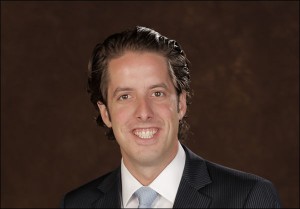ON THE DEFENSIVE: The need for restorative justice
By: Anthony Cotton//January 21, 2014//

In 1993, the Wisconsin Constitution was amended to give crime victims certain privileges.
Those privileges include, but are not limited to, restitution, compensation, the right to confer with the prosecution and the right to speak at sentencing.
Chapter 949 of the Wisconsin Statutes (Awards for the Victims of Crimes) implements the financial component of that constitutional provision, known as the “crime victim compensation program.” Through that, victims can apply to the Department of Justice and ask for payment for a variety of expenses, including those for medical care, prescriptions and mental health counseling.
Compensation and retribution are the two most common topics victims raise at sentencing. They usually believe that money will make them whole and that imprisoning the offender will bring a sense of security.
Many victims spend significant time tailoring their speeches, hoping the judge will understand just how much the crime has affected them. Naturally, when asked what punishment they think should be inflicted, victims often want the maximum sentence. Crime victims usually will describe how the defendant’s conduct has resulted in feeling a loss of security. Sometimes forgiveness is expressed, but that is rare.
Restorative justice presents a different, albeit infrequently used, approach that takes on the needs of the victim, the offender and the community.
Restorative justice is effective because it lets the victim speak directly to the offender, outside the intimidating confines of the courtroom. The approach humanizes the offender, which also aids in the healing process. It offers the victim a chance to learn more about why the crime occurred, and the victim can express directly how the offender’s conduct affected his or her family and loved ones.
District attorneys, as well as defense attorneys and judges, should be looking for ways to use restorative justice to supplement the traditional sentencing model.
Society needs this because incarceration does little to heal a victim’s pain, and the probation department lacks the resources to truly work on rehabilitating every offender. Time and time again, defendants are placed on probation with limited oversight and are offered limited programming.
Because the probation department has no formal restorative justice model, victims rarely get the answers they deserve, and offenders rarely remember just how big of an effect their crime had.
America has the highest incarceration rates in the world. Our experiment of warehousing millions of people has done little to curtail America’s high crime rate.
Those who work in the criminal justice system realize this, which is why diversionary programs and treatment courts have sprouted up throughout the country in recent years. Treatment courts are useful, but they generally are one-sided and focus almost entirely on the needs of the offender.
By implementing formal restorative justice programming, and taking advantage of the programming where it does exist, lawyers can achieve successful results for their clients, while repairing the harm done to the community.
Legal News
- Wisconsin attorney loses law license, ordered to pay $16K fine
- Former Wisconsin police officer charged with 5 bestiality felony counts
- Judge reject’s Trump’s bid for a new trial in $83.3 million E. Jean Carroll defamation case
- Dozens of deaths reveal risks of injecting sedatives into people restrained by police
- The Latest: Supreme Court arguments conclude in Trump immunity case
- Net neutrality restored as FCC votes to regulate internet providers
- Wisconsin Attorney General asks Congress to expand reproductive health services
- Attorney General Kaul releases update at three-year anniversary of clergy and faith leader abuse initiative
- State Bar leaders remain deeply divided over special purpose trust
- Former Wisconsin college chancellor fired over porn career is fighting to keep his faculty post
- Pecker says he pledged to be Trump campaign’s ‘eyes and ears’ during 2016 race
- A conservative quest to limit diversity programs gains momentum in states
WLJ People
- Power 30 Personal Injury Attorneys – Russell Nicolet
- Power 30 Personal Injury Attorneys – Benjamin Nicolet
- Power 30 Personal Injury Attorneys – Dustin T. Woehl
- Power 30 Personal Injury Attorneys – Katherine Metzger
- Power 30 Personal Injury Attorneys – Joseph Ryan
- Power 30 Personal Injury Attorneys – James M. Ryan
- Power 30 Personal Injury Attorneys – Dana Wachs
- Power 30 Personal Injury Attorneys – Mark L. Thomsen
- Power 30 Personal Injury Attorneys – Matthew Lein
- Power 30 Personal Injury Attorneys – Jeffrey A. Pitman
- Power 30 Personal Injury Attorneys – William Pemberton
- Power 30 Personal Injury Attorneys – Howard S. Sicula








